In brief, the idea then, starting with the first dual camera smartphones (I'm thinking iPhone X and Samsung Galaxy S9+ generation here, so 2017-2018), is that telephoto cameras, by their very nature, with (relatively) 'longer and thinner' physics, have a smaller aperture than a 'main' camera. Typically f/2.5 or smaller, which isn't a lot when you're talking phone camera sensor sizes and shallow Z-depth.
Now, the smaller the aperture, the less light is let in - not a problem in sunlight, as there's lots to go around, but far more an issue in low light. With the earliest dual camera phones, this was a real problem and even shooting indoors was sometimes enough to disable the telephoto camera and resort to a cropped and digitally zoomed photo from the larger (and larger aperture) main camera. And, crucially, the camera UI (whether on iPhone or on an Android device) gives no clue whatsoever that this drastic change of lens has taken place.
The first you'll often know of what's happened is when wondering why your low light zoom shot wasn't as crisp as you'd like, the second is when you (typically) 'swipe up' in your Photos application to see the 'Details'/EXIF data and you'll see the f stop number used to capture the photo: usually f/2.5 (or so) for the telephoto or f/1.6 (depending on your phone model) for the main lens:
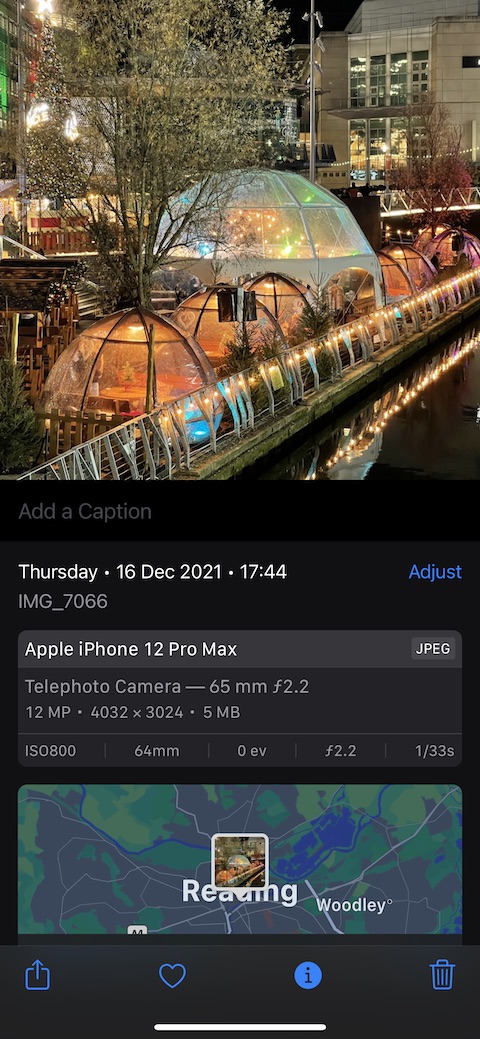
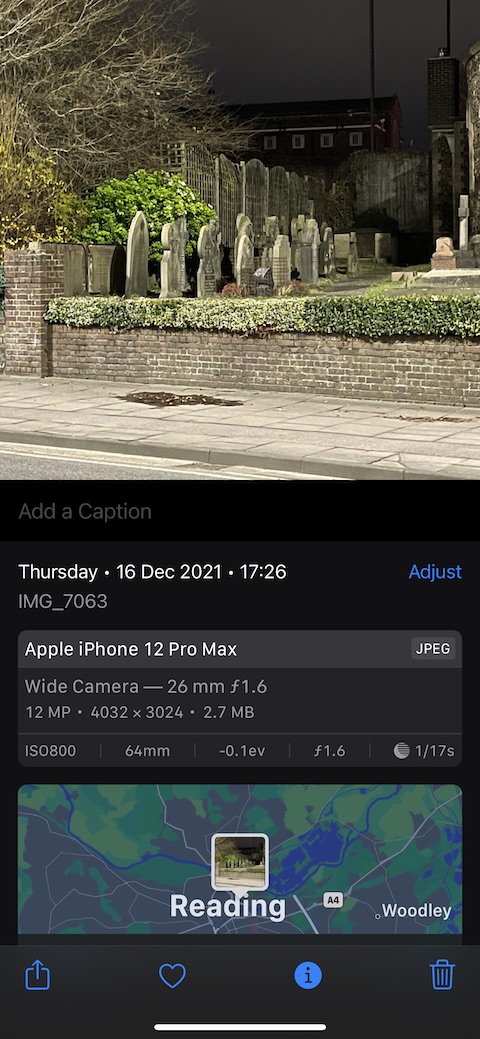
A zoomed shot at night but with plenty of artificial lights - enough to still use the iPhone 12 Pro Max's 2.5x telephoto here (with software help). You can tell from the 'Details' pane, which is just a swipe up away in Photos in iOS 15; (right) Another zoomed scene on the same day, made lighter by the 'Night mode' employed, but which is definitely low grade, and swiping up shows the 'Wide' (i.e. main) camera, and that telltale f/1.6 aperture.
Now, the latest smartphone cameras (flagships, 2019 onwards) are very good at applying 'night mode' or similar systems, wherein multiple frames are taken, even in low light and even when using the telephoto, with the results combined, and this gives telephoto on most (but not all) smartphones a better chance of using its results and not dropping back.
A few more examples, at full resolution and with a comparator, should help give you an idea of when modern flagships 'drop back' and the scale of the loss in quality. I should note that I'm using the Sony Xperia 5 iii a lot here (in addition to the reference iPhone 12 Pro Max) because the Sony's software does not drop back, under any conditions. Almost uniquely in the phone world, you choose the lens you want and the camera application sticks with this, whatever the light level. Handily, this lets me demonstrate my points here by showing output from a telephoto camera even when light is really, really low.
And with test scenes (like the shopping centre) well enough lit that any modern flagship can cope on its telephoto, it gives us a chance to pixel peep at quality from rival zoom lenses.
Note that the interactive comparator below uses javascript and does need to load each pair of images. Please be patient while this page loads, if you see a pair of images above each other than you've either not waited long enough or your browser isn't capable enough! You ideally need a powerful, large-screened tablet or a proper laptop or desktop. This comparator may not work in some browsers. Sorry about that.On Windows 10 Mobile, use the 'AAWP Universal' UWP app, which handles the comparator very competently (see the tips in the app's help screens) |
Test 1. Night time shopping
The picturesque Oracle shopping centre in Reading, complete with canal. This being Christmas, there are so many light sources that zoom is possible on all lenses on all phones. Here's the unzoomed scene, scaled here for the web, for interest:
You can grab the original photos from the iPhone 12 Pro Max and Xperia 5 iii for your own analysis.
Scaled shots then, from the iPhone and then the Xperia, just wait to make sure the page has fully loaded and then use your mouse or trackpad pointer to compare the images:

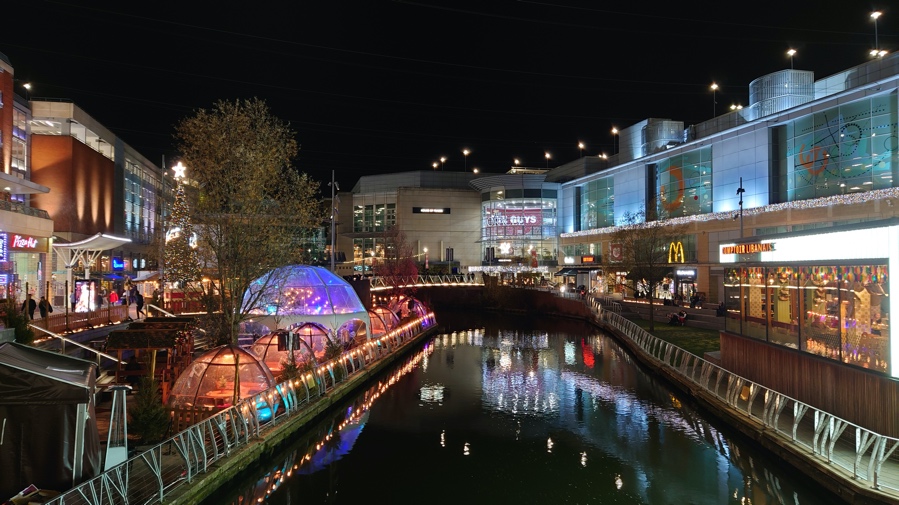
I'm not going to pixel-peep the unzoomed shots, for a change, but it's very noticeable how much the iPhone's image processing (generally) tries to lighten scenes at night. Which you prefer is very subjective, of course. The Sony's version of the scene is more true to life, but you have to admire the amount of pizzazz that the iPhone manages(!)
Right, let's zoom in. The iPhone 12 Pro Max has a 2.5x telephoto, pretty typical for camera phone these days, while the Sony Xperia 5 iii has two telephoto options, 2.9x and 4.4x, either end of a 'periscope' scale, meaning that we can test more scenarios with it. We'll start with 2.5/2.9x:
You can grab the original photos from the iPhone 12 Pro Max and Xperia 5 iii for your own analysis.
1:1 crops then, from the iPhone and then the Xperia, just wait to make sure the page has fully loaded and then use your mouse or trackpad pointer to compare the images:
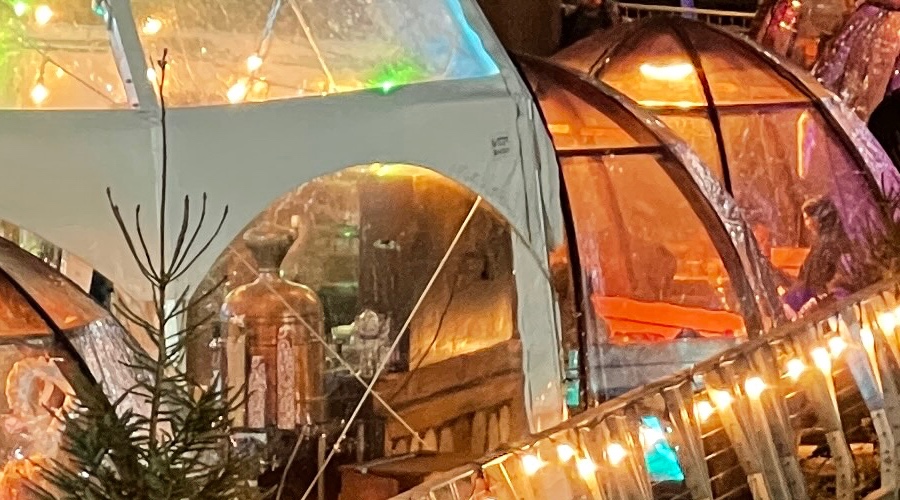
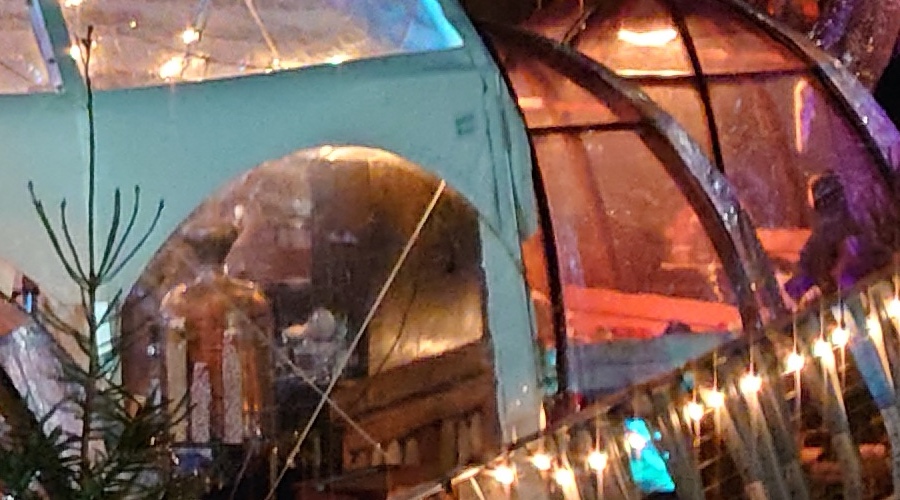
Neither photo is perfect at the pixel level, as you'd expect from a low light zoomed shot on a phone camera, though the iPhone's image processing, helped by its astoundingly good 'auto night mode', is clearly superior, if a little over sharpened. What's important here is that both shots are still taken with the telephoto lens, i.e. the Camera software hasn't dropped back to digitally cropping the main/wide lens.
While, we're here, I couldn't resist trying 4.4x zoom on both. The Sony will force use of its 4.4x lens setting, of course, but I was curious whether the iPhone, which has to go further digitally, would decide to change matters. You can grab the original 4.4x zoomed photos from the iPhone 12 Pro Max and Xperia 5 iii for your own analysis.
1:1 crops then, from the iPhone and then the Xperia, just wait to make sure the page has fully loaded and then use your mouse or trackpad pointer to compare the images:
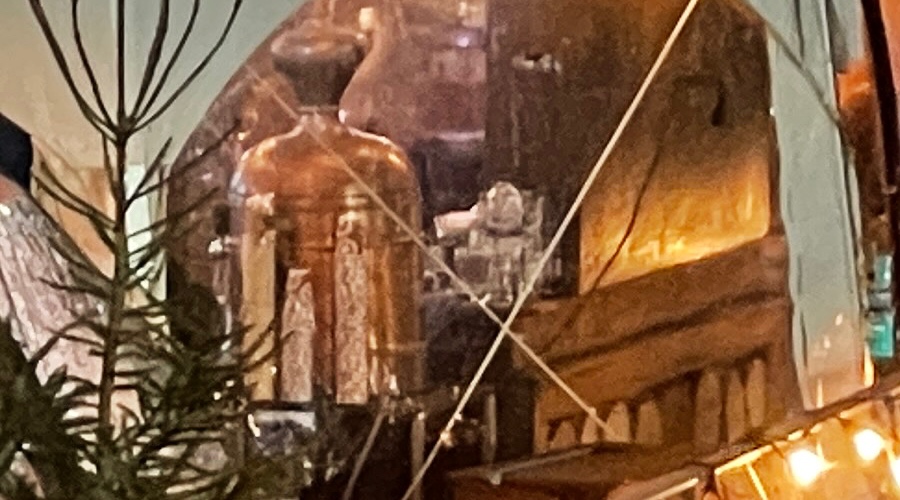

If you look at the textured patterns in the big gold urn, you can see more detail in the Sony shot, of course, though the iPhone is still doing well and, as expected, using the telephoto shot (rather than falling back) and digitally zooming into it.
Let's lower the light levels a notch or two more though.
Test 2. Dim graveyard
Lit only very obliquely, hours after sunset, these graves were shot at about 25m, with plenty of headstone detail to focus on.
You can grab the original photos from the iPhone 12 Pro Max and Xperia 5 iii for your own analysis.
Scaled shots then, from the iPhone and then the Xperia, just wait to make sure the page has fully loaded and then use your mouse or trackpad pointer to compare the images:
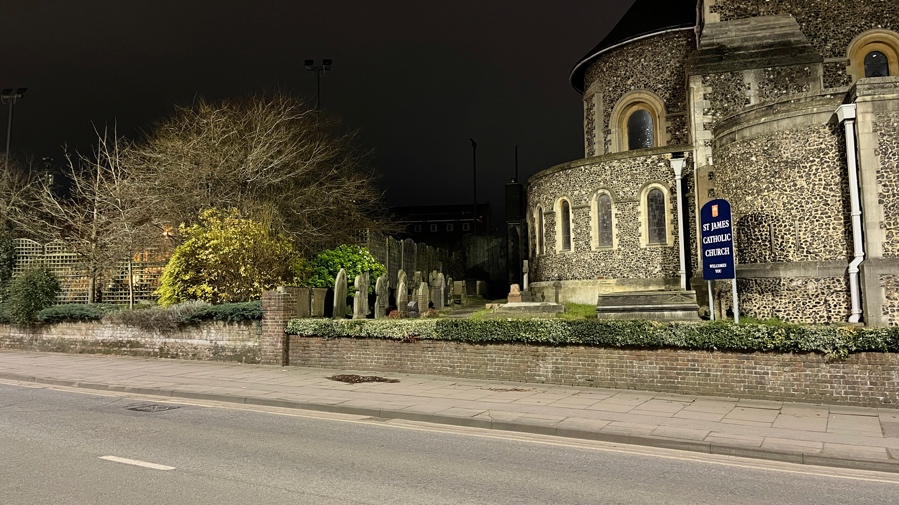
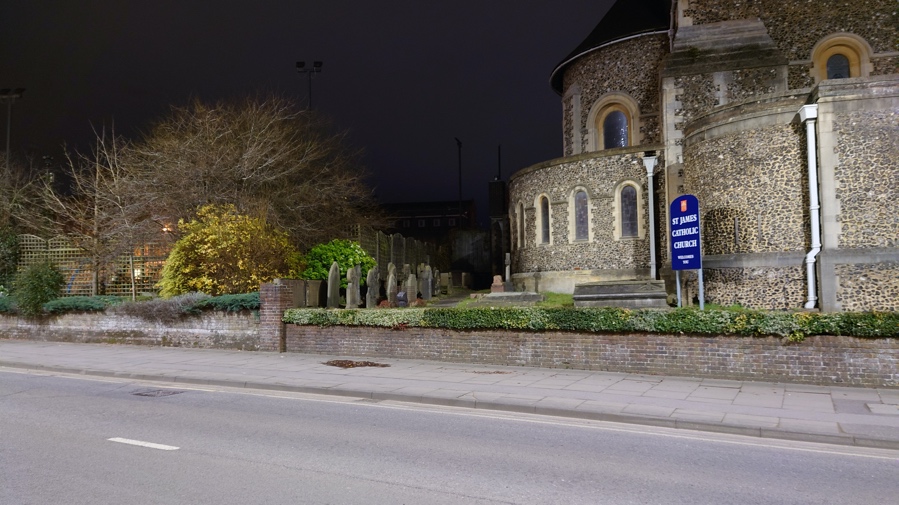
I'm not going to pixel-peep the unzoomed shots, again, though the same pattern as in the shopping centre is evident, with the iPhone going for an over-bright, enhanced shot and the Sony being a bit more restrained.
Right, let's zoom in, as before, with the native 2.5x and 2.9x telephoto options:
You can grab the original photos from the iPhone 12 Pro Max and Xperia 5 iii for your own analysis.
1:1 crops then, from the iPhone and then the Xperia, just wait to make sure the page has fully loaded and then use your mouse or trackpad pointer to compare the images:
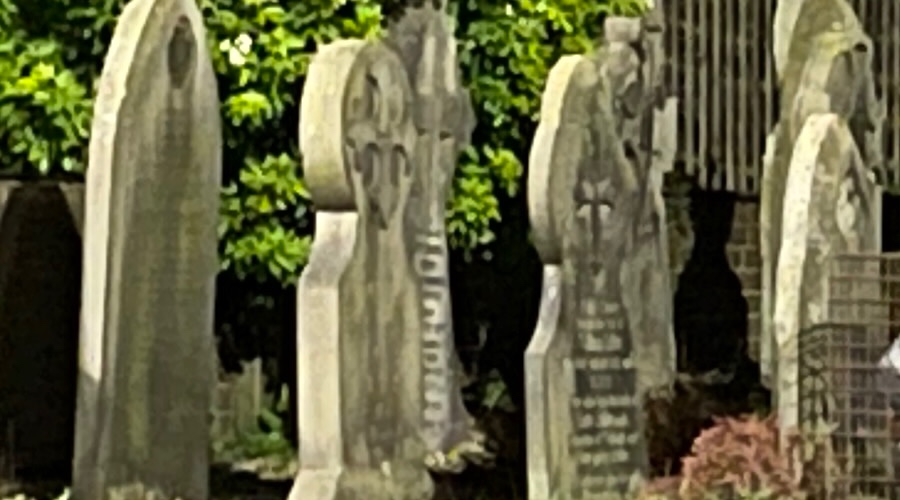
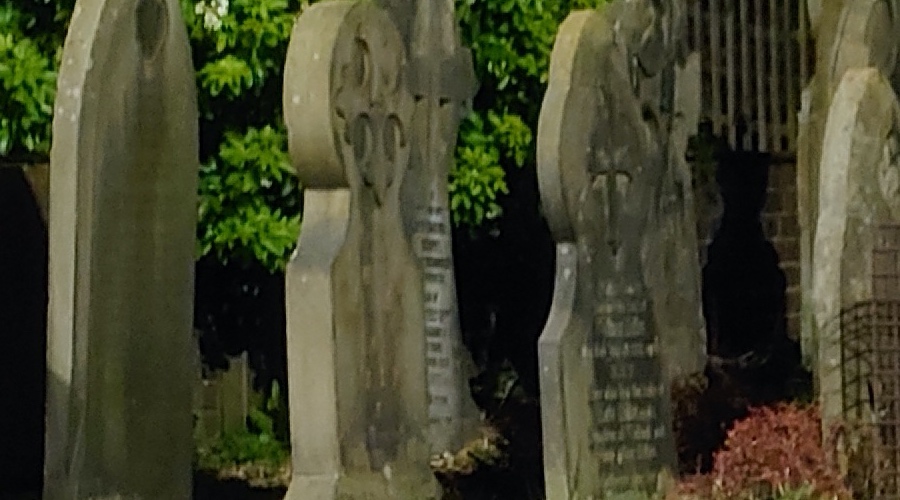
OK, this is why we're here, in this feature. There's a dramatic difference between the two photos now, at the pixel level. The Sony is using the lens that was requested, the 2.9x telephoto preset, but the iPhone's software has decided that there isn't enough light for the telephoto camera and so has, completely silently, dropped down to using a digital, lossy zoom algorithm on a photo taken with the main ('wide') camera. And you can confirm this yourself if you do grab the original photos and look in the EXIF data, look at the aperture used for each, etc.
Again, I couldn't resist trying 4.4x zoom on both. The Sony will force use of its 4.4x telephoto lens, of course, while the iPhone will just go more and more digital. You can grab the original 4.4x zoomed photos from the iPhone 12 Pro Max and Xperia 5 iii for your own analysis.
1:1 crops then, from the iPhone and then the Xperia, just wait to make sure the page has fully loaded and then use your mouse or trackpad pointer to compare the images:

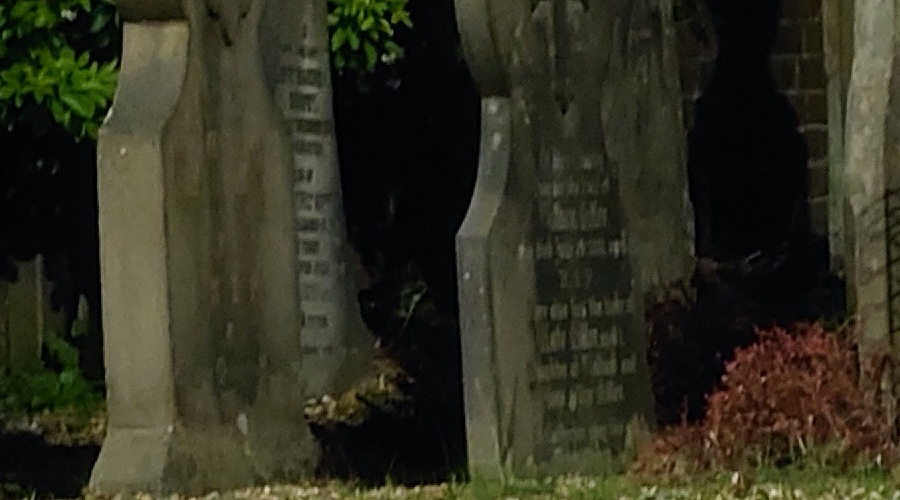
This is going to start to sound like an advert for the Sony Xperia 5 iii, but I am very impressed with its zoom output here under very low light conditions. Just look at the immense difference between its output and that of the iPhone, the latter standing in for any other recent flagship for the purposes of this feature.
I love that when you select a specific lens on the Xperia '5' or '1' ranges, Sony always uses that lens and doesn't pull a fast one behind the scenes by dropping back to something with lesser zoom factor, as the vast majority of other phone camera systems do.
Reaching the limit
Of course, it's all very well sticking to one telephoto lens whatever the light situation, but at some point there are just not enough photons coming in. Here's an example, shooting a night scene with some picturesque cranes. Grab the original Sony Xperia iii photo here, and here's the web scaled version:
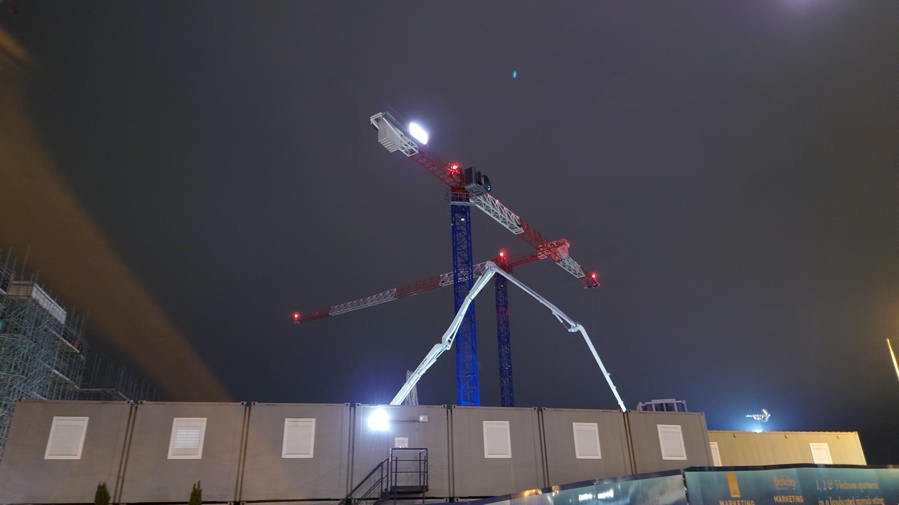
This is unzoomed, of course, and Sony's own 'mini' night mode kicks in in low light, the sky was black to my eyes, but then there was a lot of light pollution from the building site. Let's now zoom at 2.9x, the lower limit of the Xperia 5 iii's periscope camera system:
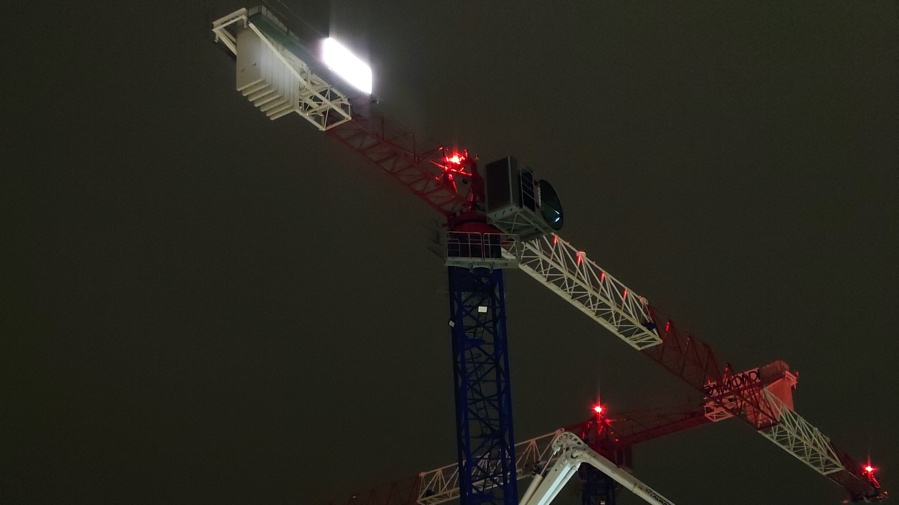
Which is pretty good, it even holds up at the pixel level if you grab the original photo. Now, trying at 4.4x on the periscope zoom system, which reduces the aperture to f/2.8, even less light gets in, here's the shot:
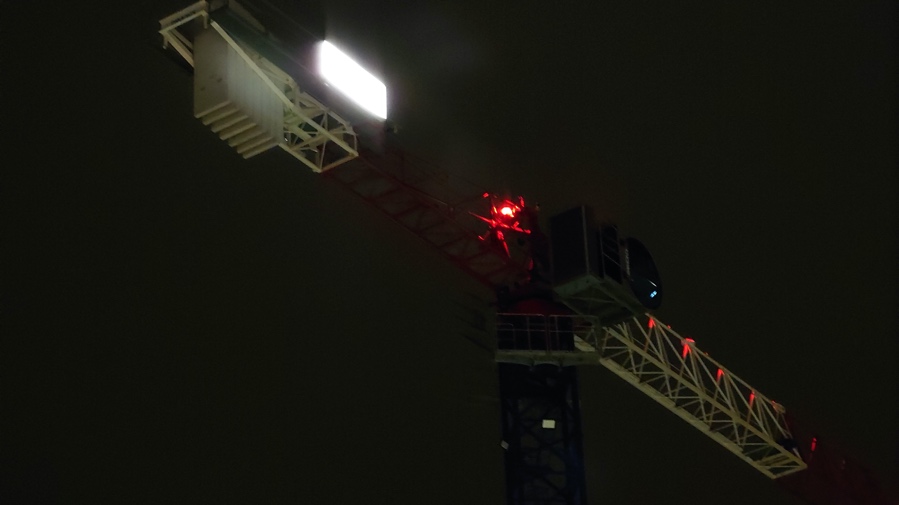
You can grab the original photo, again. Even on the overview, you can see that the phone camera is struggling. Forced to work at f/2.8, and even with fancy multi-frame combination, there's just not enough light to see the red section of crane in the middle. In this extreme example, if I wanted to use this photo then I'd pick the 2.9x zoomed shot and simply crop in a little. In other words, we've reached the limit in terms of night capture here while zoomed. Good to know!
Takeaways
The core message in this feature is that you should be careful when zooming in low light, since you may not be using the camera you thought you'd selected - and it's best to check in Photos as to the EXIF details after snapping the shot. However, I should emphasise that computational photography/night modes in most decent camera phones from the last few years (not all support night mode on their telephoto) mean that you have to be zooming in very low light indeed to trigger the fallback to the main lens. For the majority of night time scenes, there will be enough light around (after all, you're wanting to take the shot in the first place) that you should be OK to rely on 'telephoto' meaning telephoto.
But I still think the exercise of examining low light zoom photos and pushing the limits of tiny camera phone physics was worth it. And hopefully an interesting read! Comments welcome.
